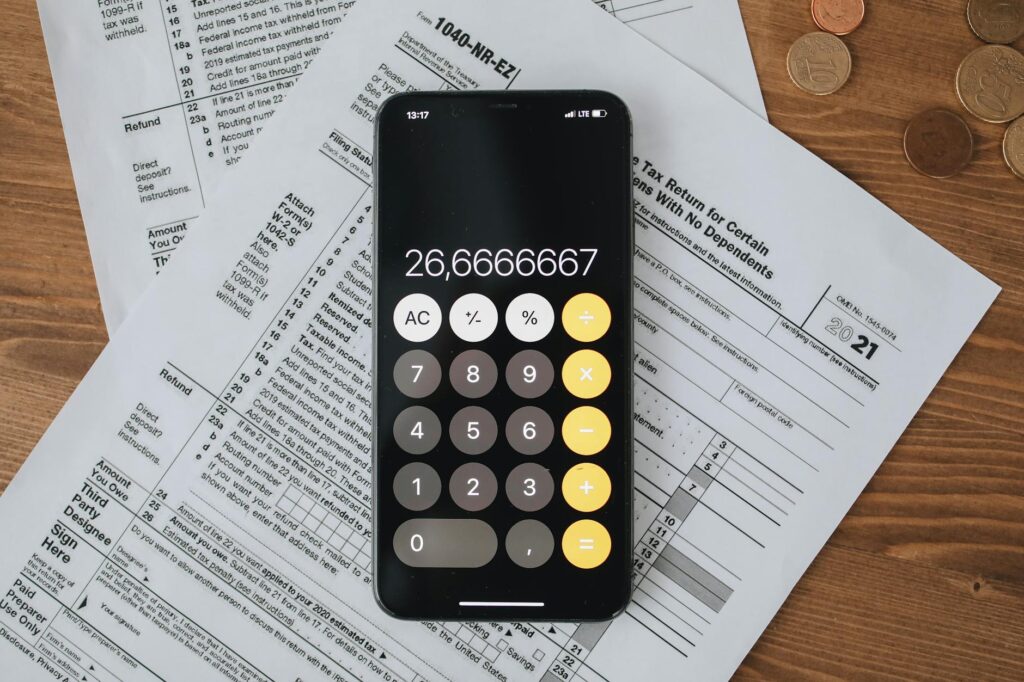Dreaming of a goal but unsure if your savings plan will get you there in time?
Many people set financial targets without knowing if their current saving rate is sufficient, leading to missed opportunities or disappointing shortfalls.
Our Savings Calculator eliminates this uncertainty by mapping out your exact path to any financial goal—whether it’s a home deposit, dream vacation, or emergency fund—showing you precisely when you’ll reach your target based on your current savings habits.
Savings Calculator – Plan Your Future Savings with Ease
Savings Goal Calculator
Results
Monthly Savings Required:
Total Interest Earned:
Future Savings with Interest:
Inflation Adjusted Savings Goal:
Savings Growth Comparison
This chart tracks two different growth rates for a $10,000 deposit over ten years. The line in red represents a 1% rate, while the line in blue shows a 3% rate. At the end of the period, the higher rate yields $13,439 compared to $11,045 with the lower rate.
| Year | Low Rate (1%) | High Rate (3%) |
|---|---|---|
| 0 | $10,000 | $10,000 |
| 1 | $10,100 | $10,300 |
| 2 | $10,201 | $10,609 |
| 3 | $10,303 | $10,927 |
| 4 | $10,406 | $11,255 |
| 5 | $10,510 | $11,593 |
| 6 | $10,615 | $11,941 |
| 7 | $10,721 | $12,299 |
| 8 | $10,828 | $12,668 |
| 9 | $10,936 | $13,048 |
| 10 | $11,045 | $13,439 |
After a decade, the account at 3% finishes at $13,439, compared to $11,045 at 1%. A higher interest rate can make a noticeable difference in long-term savings growth.
Welcome to this savings target calculator, a simple financial goal planner that helps you plan your savings steps.
For example, you might focus on an emergency fund, a home purchase, retirement contributions, or even travel or education expenses.
This personal savings estimator tracks your progress from start to finish.
You can use this budgeting tool to see how much you might set aside each month, giving you a clear view of what lies ahead.
How to Use the Savings Calculator

First, enter the target savings amount you want to reach.
Next, add your current savings balance, followed by the timeframe in months or years.
If you expect any interest growth, include that rate as well.
Then, pick how often you plan to contribute—weekly, monthly, or yearly.
This money savings calculator takes those inputs and produces a monthly savings estimator or weekly figure right away.
For example, if you use a future value savings calculator, you see a clear number on how much you might accumulate.
Meanwhile, this budget planner tool lets you adjust details on the spot, helping you see exactly what each choice means for your progress.
Why Setting a Savings Goal Is Important
The Power of Goal-Oriented Saving
Setting a specific goal helps you stay committed, highlighting the need to curb spending and increase savings.
This approach acts as a financial planning tool that encourages a long-term savings strategy based on concrete targets.
Goal-based investing can guide your contributions in a steady way, keeping you centered on saving for the future.
By defining what you want to achieve, you know exactly how to direct each dollar, and that focus can build strong habits over time.
How Much Should You Save?

For instance, some people prefer the 50/30/20 guideline: half for basic needs, 30% for day-to-day wants, and 20% for future savings.
Build an emergency savings planner that covers three to six months of core expenses, which helps handle unexpected costs.
You can our money management calculator to figure out a practical monthly or weekly amount.
Meanwhile, a retirement savings strategy might involve setting aside a steady percentage of your pay. Each approach varies, but regular contributions often produce stronger results over time.
Understanding Savings Growth with Interest
How Interest Rates Impact Your Savings
Interest can shape how your savings grow over time.
Simple interest adds a fixed amount to your principal, while compound interest means each new interest payment builds on previous gains.
For instance, if you save $5,000 at a 5% rate for 10 years, compound interest might boost your final total more than simple interest would.
Simply put, a higher rate may lead to a bigger sum, so it pays to keep an eye on the interest option you select.
High-Yield Savings Accounts vs. Regular Savings
High-yield savings accounts often come with rates above typical bank offerings.
Money market accounts may include extra features, such as limited check writing.
CDs, or Certificates of Deposit, lock in a fixed rate for a set term, although early withdrawals can lead to fees.
With higher rates, your balance can grow at a faster pace, which might help you reach your targets sooner.
Each option has its own requirements and benefits, so compare them to find the best fit for your plans.
| Year | Low Rate (1%) | High Rate (3%) |
|---|---|---|
| 0 | $10,000 | $10,000 |
| 1 | $10,100 | $10,300 |
| 2 | $10,201 | $10,609 |
| 3 | $10,303 | $10,927 |
| 4 | $10,406 | $11,255 |
| 5 | $10,510 | $11,593 |
| 6 | $10,615 | $11,941 |
| 7 | $10,721 | $12,299 |
| 8 | $10,828 | $12,668 |
| 9 | $10,936 | $13,048 |
| 10 | $11,045 | $13,439 |
After a decade, the account at 3% finishes at $13,439, compared to $11,045 at 1%. A higher interest rate can make a noticeable difference in long-term savings growth.
The above table highlights that over a 10 year period, the difference between a 1% and 3% interest rate savings account is quite drastic. Imagine this, but over a longer period of time and with even higher interest rates.
Try some of our other calculators!
Looking for more ways to plan and manage your money? Here are some other calculators that might help:
• ISA Calculator: See how tax-free savings can grow over time.
• AER Calculator: Find out how much interest your savings could earn.
• Percentage Calculator: Easily calculate interest, discounts, and more.
• BMR Calculator: Plan your food budget by understanding your daily calorie needs.
• Random Number Generator: Use this for fun savings challenges, like picking a random amount to save each week.
These tools can help you stay on top of your finances while making the process simple and stress-free!
How to Save Money Faster – Smart Saving Strategies

Automate Your Savings
The easiest way to ensure that you save monthly is to remove as many obstacles as possible.
I don’t know about you, but If I have to remember to do something, there’s a strong likelihood it won’t get done.
All of my bills are automatically paid, so why wouldn’t my savings be?
Every month, on the first day of the month, my savings come out.
I have different savings for different things, so some of those savings are automated by direct debit, and others by standing order.
Whether you’re saving for Retirement, that new house, a new car or just life, automating the process will make it happen.
Automating your savings can take the guesswork out of building your financial future.
Common Savings Goals & How Much You Need
Emergency Fund / Rainy Day Fund

The recommendation from the experts is that everyone should have 3-6 months of expenses saved.
This is hard, but do-able.
Once you have 3-6 months of savings in the bank, you can start to make more calculated risks with the rest of your savings. Things like investing in the stock market.
So if you have £3,000 monthly bills, you want £9,000 – £18,000 in the bank, in readily accessible accounts.
This emergency fund can cover for if you lose your job, or for an unexpected expenses that come up. It’s your safety net for if you need it.
FAQs About the Savings Calculator
How Accurate Is the Savings Calculator?
Explain that the calculator provides an estimate, but users should adjust for inflation, interest rate changes, and personal financial situations.
Can This Calculator Help with Debt Repayment?
Explain how users can reverse-engineer savings goals to pay off debt faster.
Should I Prioritize Investing Over Saving?
Discuss how savings vs. investing depends on risk tolerance, goals, and time horizon.
Try Our Savings Calculator Now
Whether your trying to save to pay off debt, build an emergency fund, or buy that lovely new thing, hopefully, our savings calculator can help.
The key takeaways from this post should be: Compounding beats all and the more barriers to saving you remove, the more likely you are to save
